I wanted to quickly discuss a few programmers/artists who are doing work that explores the intersection of computation and visual art. These people have inspired me to create video art and interactive visual systems, to think about algorithmic/procedural composition tools in interesting ways, and also to rethink what a “gallery space” is in the 21st century.
First is Jared Tarbell’s Complexification | Gallery of Computation.
Tarbell states:
I write computer programs to create graphic images.
With an algorithmic goal in mind, I manipulate the work by finely crafting the semantics of each program. Specific results are pursued, although occasionally surprising discoveries are made.
The images, interactive visual systems, and code that Tarbell creates is beautifully concise and free of any artistic “fat” (put another way, artistic choices are backgrounded to facilitate a deeper appreciation of the processes and algorithms at work, e.g. using a neutral, muted, black and white, or rainbow color palette). This choice, depending on your viewpoint, may make these works more or less engaging. A great deal of the work is done in Processing. For more work by Tarbell (albeit a bit older) check out the website of his company, Levitated.
Next is Mario Klingemann’s (AKA “Quasimondo’s”) Incubator.
This gallery has a huge range of quality, from utilitarian to silly to artistic. The level of interactivity is also variable, from tapping into the user’s webcam to simply being a smartly-programmed algorithm. These programs are primarily created with Adobe Flash or Processing. Some of the more interesting programs are Feedback, Pinupticon, and Cityscapes. More works by Klingemann can be found on his tumblr.
Last is Casey Reas’s website.
This website acts as a gallery for the huge number of works Reas has done over the past 10 years. Reas is the co-creator (along with Ben Fry) of Processing, and has acted as the catalyzer for many changes in data visualization and internet typography design in the last 15 years. As with the work of Tarbell, these projects generally lack artistic “fat” or silliness, I feel, which can be viewed as positive or negative. Regardless, they are impressively done and computationally beautiful. To get a look at some of the work that has been facilitated by Reas and Fry through Processing, check out the Processing Exhibition.
The creation of visualizations of algorithms, interactive visual programs, and more generally art that incorporates computation and visual elements has developed extensively in the past 30 years. Different forms of abstraction have extended the creation of visuals into the computational domain (through experiments by artists and programmers) and extended computation to the creation of visuals in new ways (through more accessible programming tools such as Processing, Flash, and others).
Programs that utilize live streams of data (whether mined from the internet, from a controller, or from video cameras) are of particular interest, as video manipulation is catching up with the real-time capabilities of audio made possible in the 90s through increasing computer speeds.
